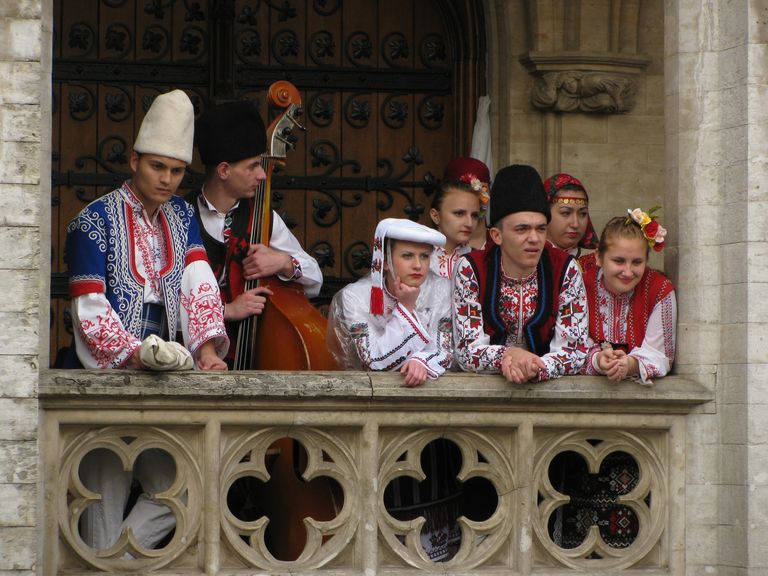Bulgarian traditional attire is known for its vibrant colors, intricate embroidery, and unique styles.
Women's Attire:
- Shirt (riza): A long, loose-fitting shirt, often made of linen or cotton, with intricate embroidery on the collar, cuffs, and yoke.
- Skirt (poyas): A long, full skirt, usually made of wool or linen, with colorful patterns and embroidery.
- Apron (prepaska): A decorative apron, often embroidered with floral or geometric motifs.
- Headwear: Various types of headwear, including scarves, bonnets, and crowns, decorated with ribbons and embroidery.
Men's Attire:
- Shirt (riza): Similar to the women's shirt, but often made of thicker fabric and with simpler embroidery.
- Pants (gatani): Loose-fitting trousers, usually made of wool or linen.
- Vest (eleche): A sleeveless vest, often embroidered with intricate patterns.
- Belt (poyas): A wide belt, often decorated with metal buckles and embroidery.
- Hat: A variety of hats, including fur hats and embroidered caps.
Key Features:
- Embroidery: Intricate embroidery is a hallmark of Bulgarian traditional attire, often featuring floral, geometric, and symbolic motifs.
- Bright Colors: Vibrant colors, such as red, blue, green, and yellow, are commonly used in traditional Bulgarian clothing.
- Unique Styles: Different regions in Bulgaria have their own distinct styles of traditional clothing, reflecting local customs and traditions.
Modern Interpretations:
Today, traditional Bulgarian attire is often worn during special occasions, festivals, and cultural events. Modern designers often incorporate traditional elements into contemporary fashion, creating a unique blend of old and new.
